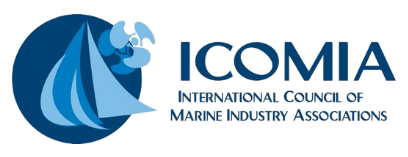Two small zones in Sotckholm Archipelago, no recharge points provided. Many quiet areas across various lakesNational incentive was decided during 2018 in Sweden for electrically driven outboards including battery pack. 25% of total purchasing sum but limited to 10.000 SEK (approx. 1000 EUR). Swedish maritime Authority is underway to introduce a new regulation (during 2019) to introduce a new navigation mark to show engine/motor driven vessels prohibited. These will be valid for any type of motor (also electric) if not completed with additional text e.g. “Electric motors exempted”. Decisions to implement these in areas will be by regional authorities
RRG Category: Zero Emission Zones
Boat Licensing & Skippers Certificates Design, Construction, Compliance Environment Health & Safety/Exposure Levels Marinas and Harbours Operating Limits Product Liability Registration Regulations for charter boats Safety Equipment Taxation Zero Emission Zones
-
Sweden – Zero Emission Zones
-
Finland – Zero Emission Zones
269 river and lake zones where motor boats are prohibited. In some zones electric propulsion is allowed and in some zones the restrictions apply to 5HP or more. Finland has also 47 zones where usage of PWC’s is prohibited. The main reason for the restrictions is noise reduction in small lakes. On top of these zones there are hundreds of speed/wake limit zones.There are regular sockets for pleasure boats in guest marinas, cost is either separate fee for electricity or included in the marina fee
-
USA – Zero Emission Zones
Federal Laws that regulate air and water emissions from watercraft. Every lake in the US is regulated by either the state or local government or in many cases the Army Corp of Engineers and National Park Service. With that said there are lakes in the US where certain types of boats can be limited or banned. There are lakes where engine size is limited and lakes that are two small to support gas engines, but electric is allowed.There are no tax incentives or reduced annual registration fee for using a specific type of engine. In some states if a boat is less than a certain size then the registration fee can be waived, but that is regardless of the propulsion method.
-
Canada – Zero Emission Zones
The law is: No person shall operate a power-driven vessel in any of the waters described in Schedule 3, except as indicated in that Schedule.The municipality must apply to Transport Canada for a “Vessel Operation Restriction Regulation” If it is approved then the combustion engines can be restricted. These are mostly smaller lakes but definitely an impact especially in the province of Quebec which has 254 restrictions.This link identifies all the lakes in Canada which prohibit combustion engines (electric OK)https://laws.justice.gc.ca/eng/regulations/SOR-2008-120/page-7.html
-
Italy – Zero Emission Zones
30 different zones, 18 of which allow navigation inside them with the use of an electric engine. In particular is Northern part of the Garda Lake, which is ruled by the autonomous province of Trento, which is very environment oriented. Provides recharge stations.Reason: Pollution
-
Spain – Zero Emission Zones
80-90 damsWater flow level, agriculture, hydroelectric power station and/or safety reasons
-
Poland – Zero Emission Zones
Several areas across the countryGeneral aimed at reducing emissions, pollution or noiseThe zones for the prohibition of combustion engines are set by the local authorities on the level of the district. There is no country database to clarify the number or location of such areas. Those zones can change every year and local user is responsible to contact local authorities for information
-
Netherlands – Zero Emission Zones
Amsterdam has announced that from 2025 onward all engine powered craft with “city limits” must be climate neutral (= electric). Likely that this will be followed by other municipalities with inner city canals.There are no national incentives to promote electric powered craft.There is a growing popularity with boat rental operators to rent out electric powered craft, partly due to the fact they are renting boats in nature park areas, other the political climate in the Netherlands which makes one look “green” (= good). Not for marine. Interestingly enough the Dutch government is tuning down the incentives on electric mobility, with even talks of introducing usage taxes (ie road tax) for EV as ICE powered vehicles reduce in number. The creation of electric drive only zones is up to local municipalities or province, there is no national coordinated approach. Finding where electric drive zones are is very difficult. The city of Amsterdam has announced it will allow only electric drives on the inner city canals from 2020. Latest development in the Netherlands is a high court ruling on NOx, which has now brought many (infrastructure) projects to a grinding halt (127 large government projects, thousands of small private projects).
-
Japan – Zero Emission Zones
No restriction zones
-
Estonia – Zero Emission Zones
Is the driving factor for these zones either limiting noise, emissions (local air pollution) or have they historically been in place for a number of years?On lakes under 100ha and rivers narrower than 10m fuel engines are allowed only for governmental survey, resque or surveillance purposes https://www.riigiteataja.ee/akt/104072019005?dbNotReadOnly=trueAre there any incentives in place to encourage zero emissions and what type of technology is most prevalent?No major incentives introduced by the state
